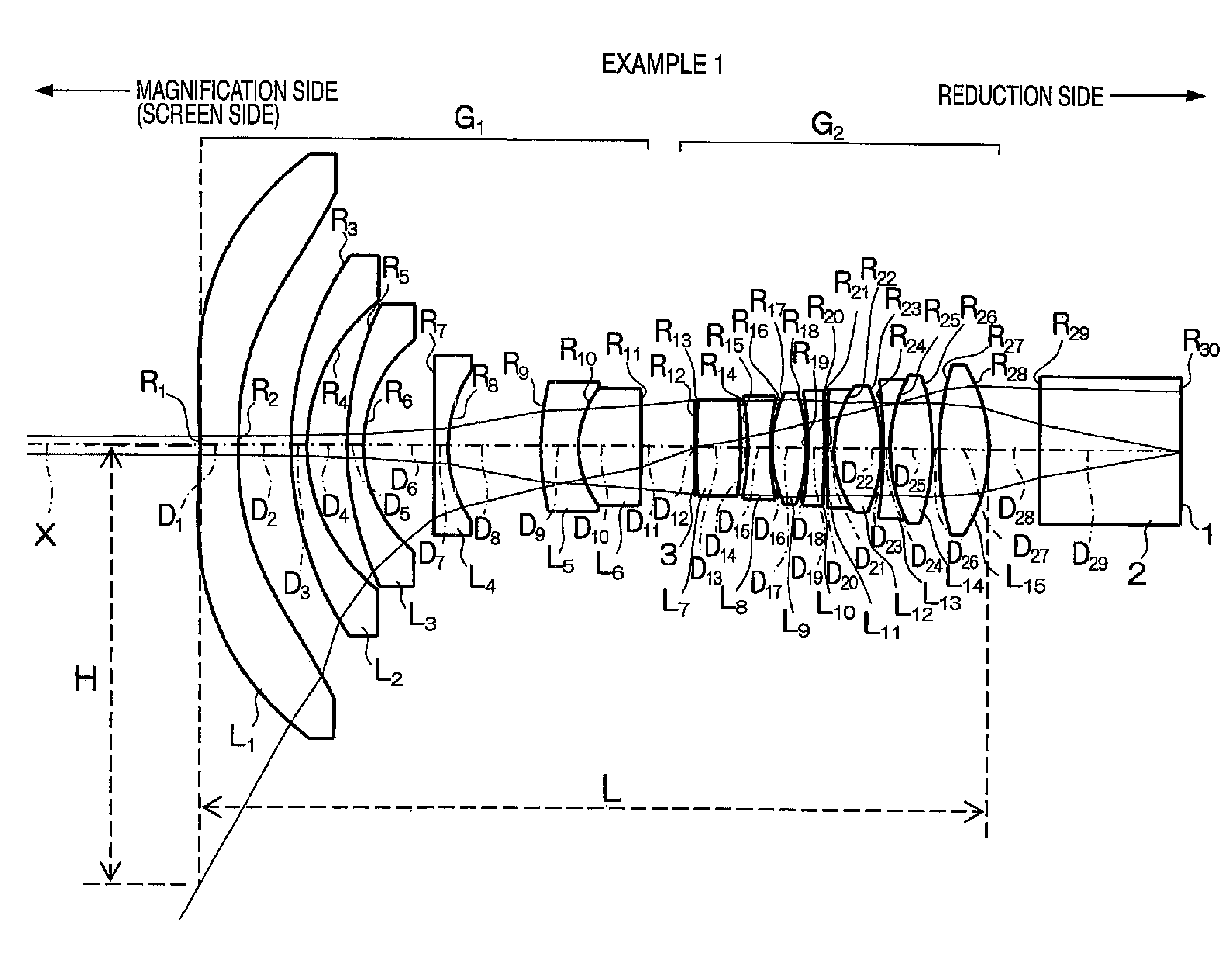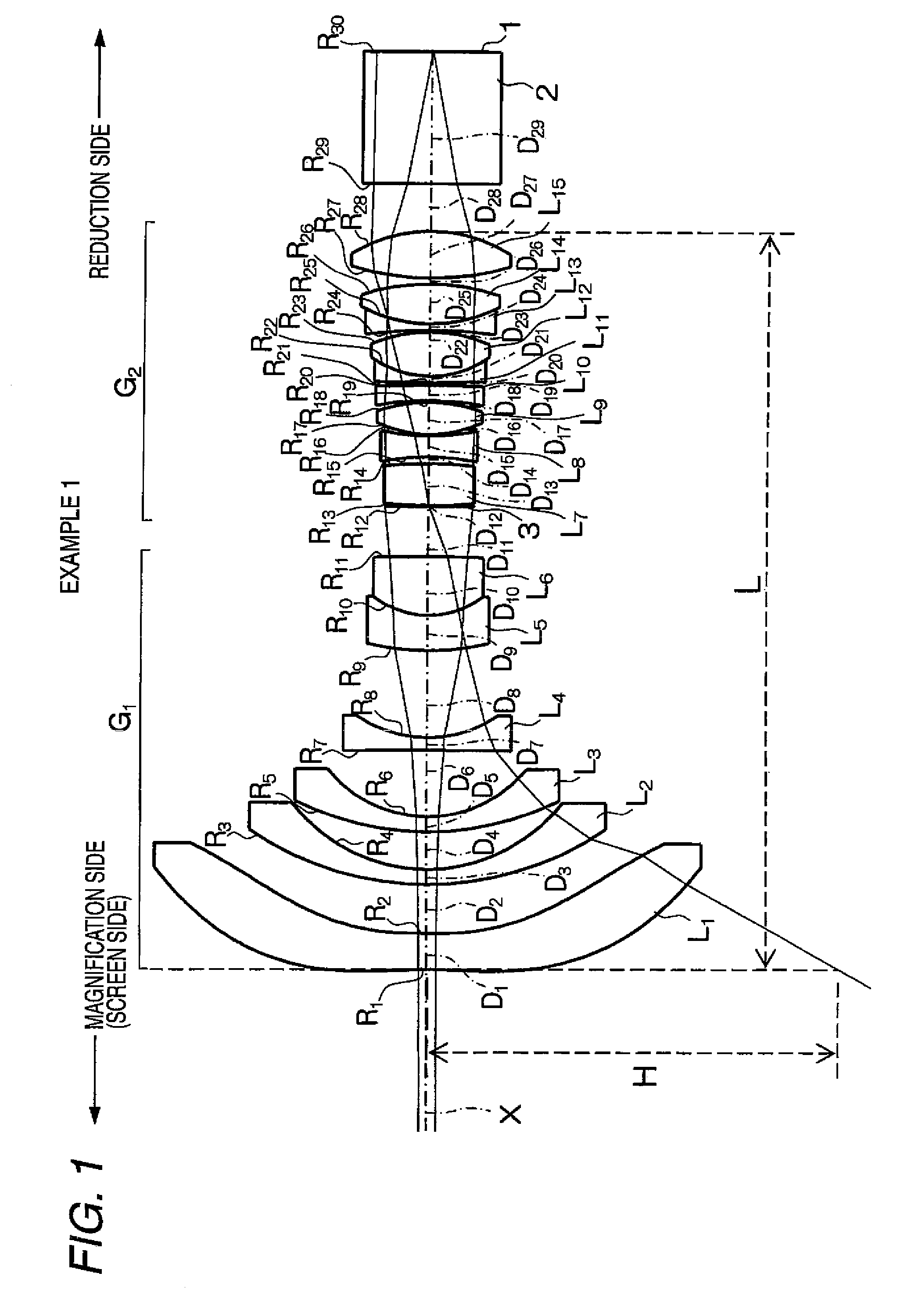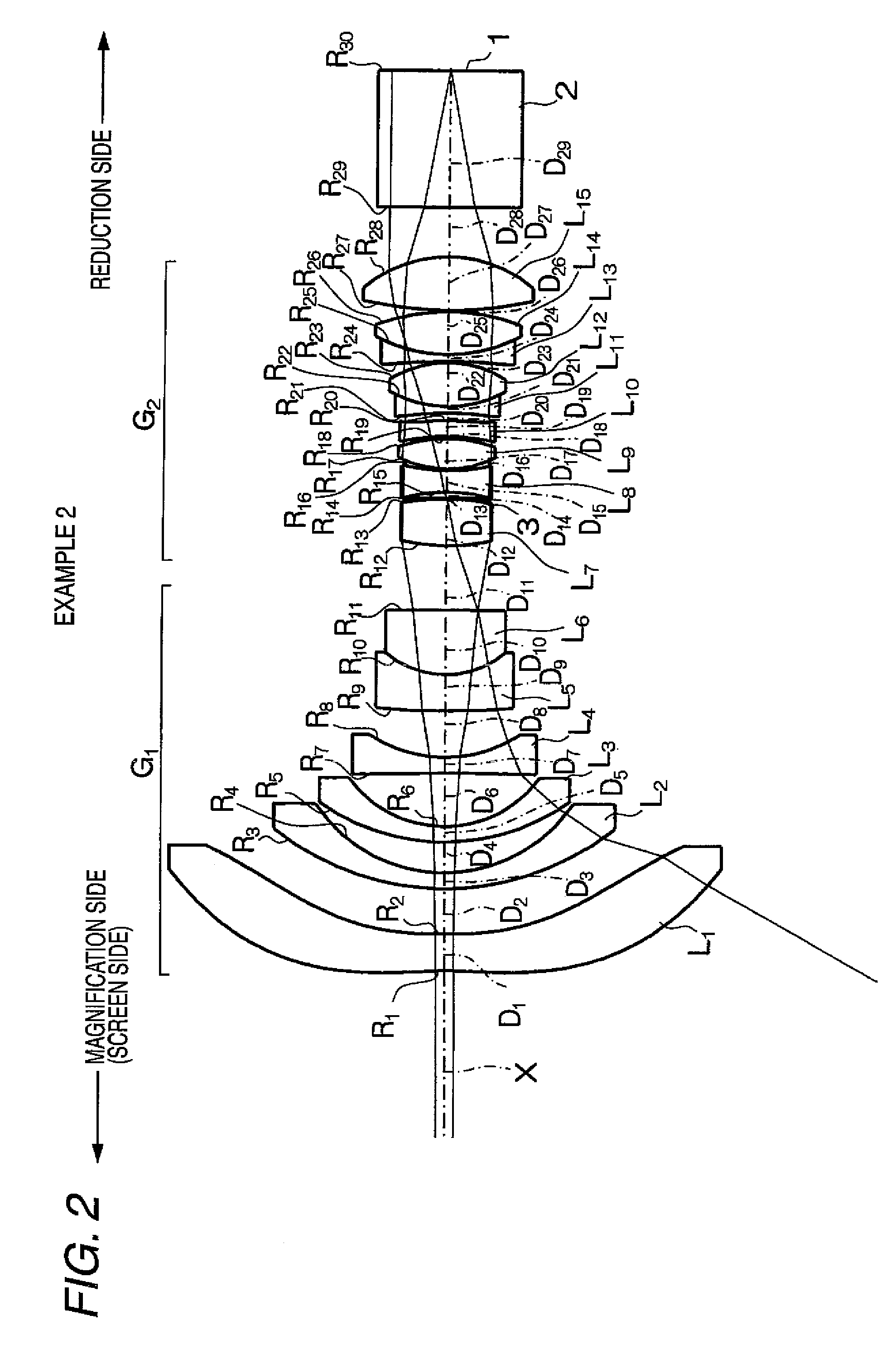Projection lens and projection type display device using the same
a projection lens and projection type technology, applied in the field of projection lenses, can solve the problems of increasing the spatial size of the device, the inability to realize compactification of the device size, and the length of the lens along the optical axis, and achieve the effect of wide viewing angle and good aberration correction function
- Summary
- Abstract
- Description
- Claims
- Application Information
AI Technical Summary
Benefits of technology
Problems solved by technology
Method used
Image
Examples
example 1
[0071]As shown in FIG. 1, in a projection lens according to an example 1, a first lens group G1 having negative refractive power and a second lens group G2 having positive refractive power are arranged in order from the magnification side. The projection lens is substantially telecentric on the reduction side.
[0072]The first lens group G1 includes, in order from the magnification side, a first lens L1 formed of a plastic aspheric lens having small refractive power (mainly for the purpose of aberration correction), a second lens L2 and a third lens L3 of which each is formed of a negative meniscus lens whose convex surface is directed to the magnification side, a fourth lens L4 formed of a biconcave lens, and a cemented lens formed by two lenses which are a fifth lens L5 formed of a negative meniscus lens whose concave surface is directed to the reduction side and a sixth lens L6 formed by a biconvex lens.
[0073]On the other hand, the second lens group G2 includes a seventh lens L7 fo...
example 2
[0080]A projection lens according to an example 2 is as shown in FIG. 2. This projection lens has substantially similar constitution to the constitution of the projection lens in the example 1, and the explanation of the common portions is omitted.
[0081]Namely, the projection lens in the example 2 is different from the projection lens in the example 1 in a point that the aperture diaphragm 3 is disposed between the seventh lens L7 on the most magnification side in the second lens group G2 and the eighth lens t8 located on the reduction side of the seventh lens L7, and in a point that the eleventh lens L11 is a biconcave lens.
[0082]Regarding the projection lens in the example 2, radii R of curvature of respective lens surfaces, on-axis surface spacing D between the respective lenses, and refractive indices Nd and Abbe numbers υd of the respective lenses at the d-line are given on the upper portion of a table 2. Further, values of respective contacts K, and A3 to A12 corresponding to ...
example 3
[0084]A projection lens according to an example 3 is as shown in FIG. 3. This projection lens has substantially similar constitution to the constitution of the projection lens in the example 1, and the explanation of the common portions is omitted. This projection lens is different from the projection lens in the example 1 in a point that in place of the eighth lens LB in the second lens group G2 in the example 1, a cemented lens formed by two lenses which are an eighth lens L8 formed of a biconcave lens and a ninth lens L9 formed of a biconvex lens is provided. Lenses from a tenth lens L10 on in FIG. 3 correspond to the respective lenses in the example 1 whose lens numbers are advanced one by one.
[0085]Regarding the projection lens in the example 3, radii R of curvature of respective lens surfaces, on-axis surface spacing D between the respective lenses, and refractive indices Nd and Abbe numbers υd of the respective lenses at the d-line are given on the upper portion of a table 3....
PUM
 Login to View More
Login to View More Abstract
Description
Claims
Application Information
 Login to View More
Login to View More - R&D
- Intellectual Property
- Life Sciences
- Materials
- Tech Scout
- Unparalleled Data Quality
- Higher Quality Content
- 60% Fewer Hallucinations
Browse by: Latest US Patents, China's latest patents, Technical Efficacy Thesaurus, Application Domain, Technology Topic, Popular Technical Reports.
© 2025 PatSnap. All rights reserved.Legal|Privacy policy|Modern Slavery Act Transparency Statement|Sitemap|About US| Contact US: help@patsnap.com



